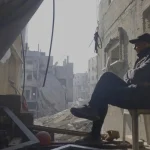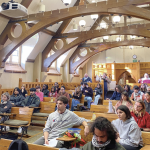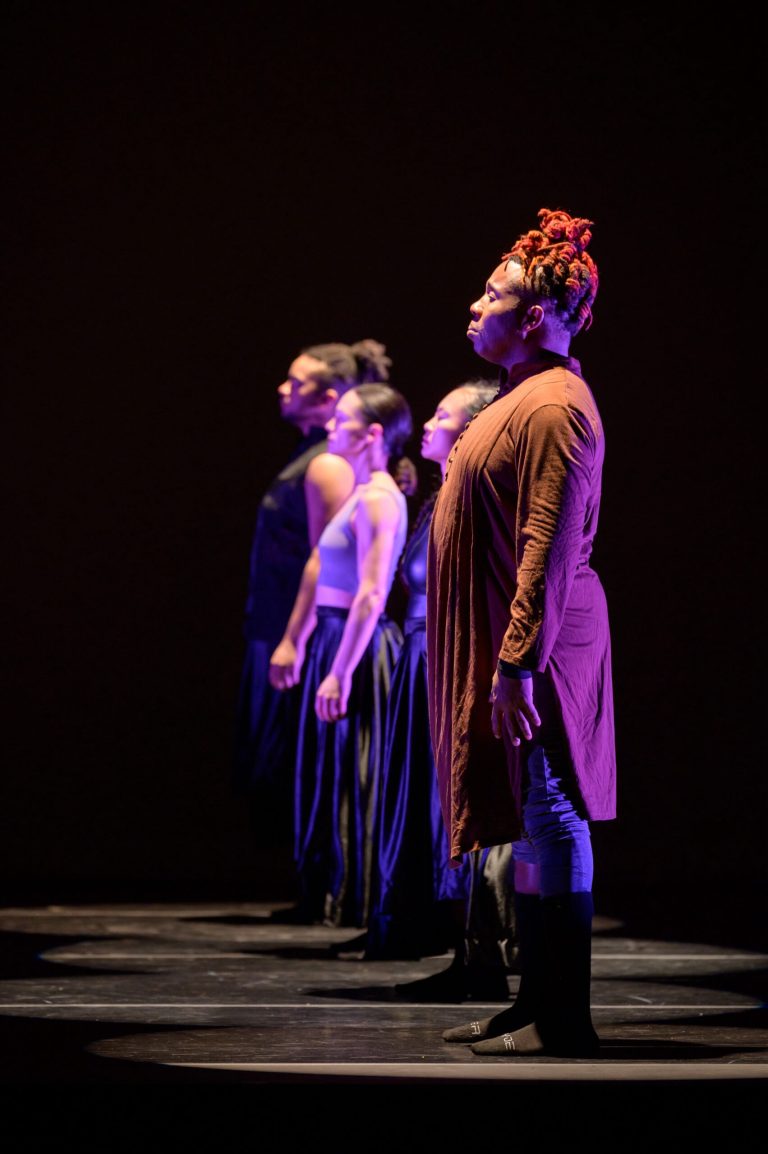Katelyn Path ’28
Contributing Writer
Red Island takes place at a French military base in Madagascar during the early 1970s and revolves around a white military family made up of Colette (Nadia Tereszkiewicz) and Robert Lopez (Quim Gutiérrez) and their three young sons Thomas (Charlie Vauselle), Michel (Socha Cosar-Accaoui), and Alain (Mathis Piberne). Going into this film, I was expecting what the IMDb page described as a coming-of-age movie centered around Thomas, however, the film immediately introduces deeper racial, sexual and abusive themes. Every line is spoken in French with English subtitles, splitting my attention between the images and action on screen and the fast-paced lines transcribed below. To say this was a jarring first visit to the Cinestudio would be an understatement, but the movie eloquently delivered a message of an isolated and shielded white perspective within a landscape of inequality and racism.
The beginning of the film focused heavily on Thomas, the son of a white aviation navigator in the French army stationed in Madagascar, and his view of the world through the lens of his favorite superhero, Fantômette (Calissa Oskal-Ool). The child actors- who were the main focus of the film- did a good job conveying the severity of complex subjects presented to them throughout the film, and the language barrier did little to prevent me from understanding the tone of different scenes. As the film progresses, Thomas is established as an observant child, and Vauselle reflects this through a wide range of facial expressions and well-delivered questions and comments regarding the world around him. As he witnesses familial fights and racial disparities, the audience begins to realize just how much Thomas is understanding. The ending subverts all expectations by flipping the focus of the film completely from Thomas’ point of view to that of an indigenous woman who was scorned earlier in the movie. A character who had previously been mentioned and seen briefly becomes the sole focus of our attention for the last 10 minutes of the film, perhaps highlighting the focus on portraying a white perspective in current and popular media. By showing subtle microaggressions throughout the course of the film, the director (Robin Campillo) builds up to the portrayal of the indigenous Madagascans in these last, tense moments of the film.
As someone who tends to watch movies more for their entertainment value than to seek out a hidden meaning within the subtext of the film, I enjoyed the film, but did not always understand the purpose behind subtle details and moments. When Thomas’ father brings home three crocodiles to represent his three sons, Campillo chooses to create a montage of images that frequently cuts back to the crocodiles. The direction and editing made the film hard to follow at some points, however, the main message was clear if slightly muddled by these choices. I would describe this film as realistic fiction with avant-garde moments sprinkled in to highlight specific moments and choices made by the director. Even with my little understanding of this genre of filmmaking, I was still able to grasp the main message of the film and enjoy almost every part. While I was confused at some points, the film’s portrayal of an oppressed indigenous community seen through the eyes of a young white boy kept me captivated through the constantly developing and interconnecting storylines. For those interested in watching the film, it is playing at 7 p.m. at the Cinestudio Tuesday, Wednesday, and Thursday night, October 1 through 3.



+ There are no comments
Add yours